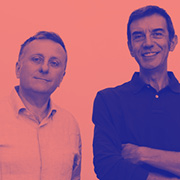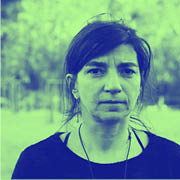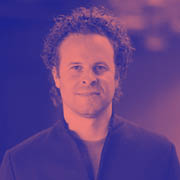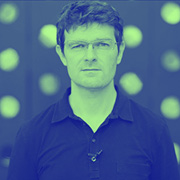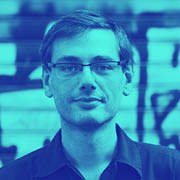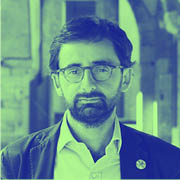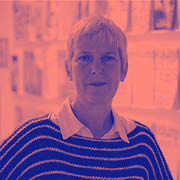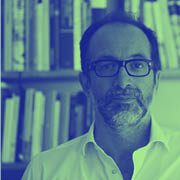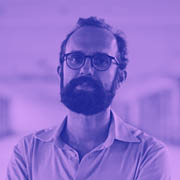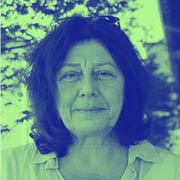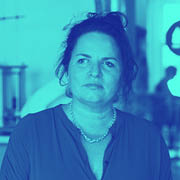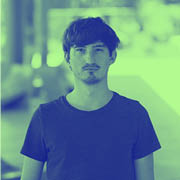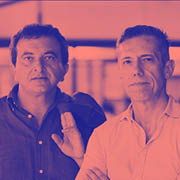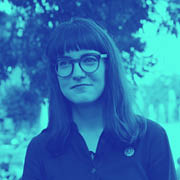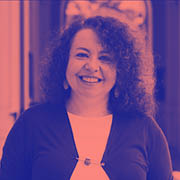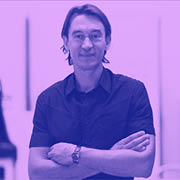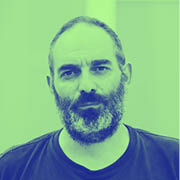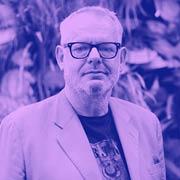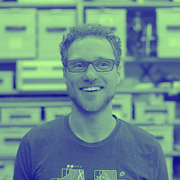DESIGNER, TEACHER
STEFANO MIRTI
Stefano Mirti is an expert in Relational Design and communication with extensive experience in Italy and abroad in experimental projects at 360°. He has been the director of the communication program for EXPO 2015 and director of the Master in 'Relation Design' in Milan.
TERMS
artificial intelligence
functions
overlay
bottom-up
NEW ECOLOGIES
ARTIFICIAL INTELLIGENCE
I find fascinating the potential of artificial intelligence to work with ecology and with the environmental elements of our society. It could be interesting to start thinking in design terms not only about the positive, but about the negative sides too. We are entering a spooky world and I have the feeling that the intersection between artificial intelligence, environment and ecology could take different directions. Like any other design aspect, this intersection could be taken in a positive or negative way. And like any other design in the last 2-3.000 years of human history, when things become negative they also become interesting. For example the pioneers of modern architecture thought that thanks to new materials, steel, concrete, technology and the machine they could build incredibly nice cities. Unfortunately, the World Wars taught us that these materials can also be used in vastly different ways. The intersection between artificial intelligence and ecology seems like a spooky science fiction movie, but it is our reality. Normally science fiction is a render or projection of the future - this is here and now.
URBAN ASSETS
FUNCTIONS
The square metre used to be the key element of value in the city. Town planning was all about the square metre as an indicator of value. However, it seems that the square meter per se is becoming largely irrelevant while the function of these square meters is becoming increasingly important. There used to be a time where if I owned 1.000-10.000m2 I would be rich. Nowadays this has become irrelevant. What is relevant is what you do with this space. What things are happening in these square meters? This shift in defining the value of the square meter in relation to function is quite interesting because it indicates a transition from an economy based on real estate, to an economy based on an immaterial element, such as the function of space.
DIGITAL TOOLKIT
OVERLAY
There is an overlay between the traditional, analogue world and the new, digital world. Another good term could be short circuit. All the interesting things that happen nowadays happen whenever there is a short circuit between the old analogue and the new digital worlds. Things become interesting when there is this overlap.
NEW COLLECTIVES
BOTTOM UP
works in opposition to top down. For example, yesterday there was a football game between Germany and France and this morning I bought a newspaper. This is top down communication. Some people met yesterday and organised the newspaper; they decided what was in the first page, in the second page, what was big and small. If this morning I was reading the website of the newspaper it would also be the same, because the same people decided what was at the top, middle and the bottom. I decided to inform myself with the newspaper but I could also have gone to Twitter or Facebook. The communication in this case is completely different: there are hundreds of thousands of people, alone or in groups that talk about this event. This is bottom up communication. Society works increasingly on this bottom up dynamics and this applies to every aspect of our society
INTERVIEWED BY
ANIA MOLENDA & GIANPIERO VENTURINI
Stefano Mirti shared plenty of personal stories on the way language has shaped the way he looks at the world as well as explained his trust in experts and appreciation for generalists.
sculpture
EXPO MILAN 2015
‘Albero della Vita’
photo by Davide Oliva
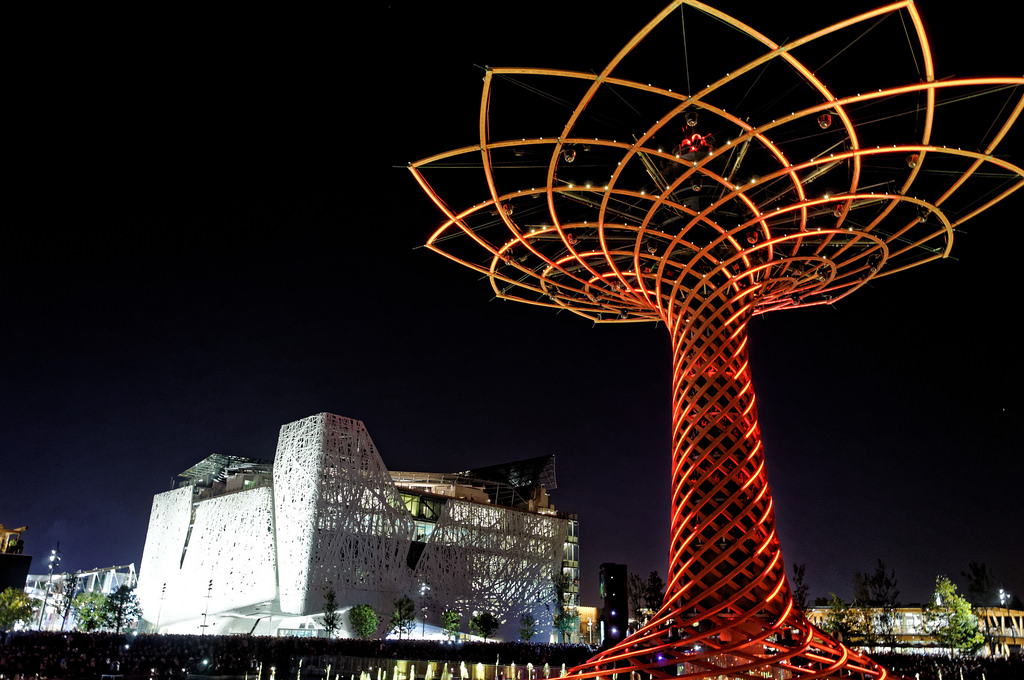

GV:
Could you give one example of what you call an overlay?
SM:
The last 3 years I worked as the head of social media for Expo Milano 2015. There was the Tree of Life (Albero della Vita), and we know that 2.500.000 times someone took a picture of it and posted it on his or her social media account. This is a huge number. When a thing like this goes viral, the communication of the event completely changes. It is no longer top down and based on advertising. It is simply people that spread the word. How we generate these kind of things is a design challenge. A more recent example is the installation of Christo, the Floating Piers at Lago d’Iseo. Once again, he set up a stage where people love to go and photograph, and this picture exploded. This was not the first time that Christo did such a thing but it is the first time that it went viral so fast. This is the short circuit between the analogue - the pier - and the digital, in this case social media.
installation
FLOATING PIERS
By Christo & Jeanne-Claude
AM:
Is there something that you think characterizes the vocabulary of today? Is there something that should be done about it?
SM:
In terms of how our vocabulary relates to contemporary culture if I was to suggest a useful word, I would choose the word ‘meaningless’. It seems to me that nowadays the most interesting things are the meaningless ones, whereas the things that are meaningful do not appear to be really useful. We are in this paradoxical condition where meaningful things become meaningless and vice versa. So I find your vocabulary making exercise quite peculiar, as normally a vocabulary would be a tool to make sense of things. Imagine if you were to create a vocabulary in order to generate meaningless things! That would be fantastic!
artist
MARCEL DUCHAMP
1887 - 1968
AM
Do you have any anecdotes that you can share about language and meaning and shifts of meaning that have lead in awkward or funny situations?
SM
I have been living abroad for quite some time and I travelled a lot. The world is full of moments where new meanings arise because people don’t understand each other. One occasion that I remember as a moment of enlightenment in Japan, was when I encountered the Japanese verb ‘mieru’ - ‘to see’. In Latin languages and even in British English, the key verb ‘to be’ structures the auxiliary verbs. In American English, the key verb is ‘to get’: “I get here”, “I get old”, ex cetera. ‘To get’ is very different than ‘to be’ however. In Japan, this key verb is ‘mieru’, which is ‘to see’. Because of this I realised that when a whole language is about ‘seeing’, it is very different than when it is about ‘getting’ or ‘being’.
In Japan, I was living with a Dutch man and we got along very well. One evening when I came back home, my flatmate announced that he had a Japanese girlfriend. It was difficult to have interaction with locals in Japan and to start a relationship was something unbelievable. So, as an Italian, the first thing I asked was ‘Is she pretty?’ and he said ‘What do you mean?’ I repeated ‘Is she a beautiful girl?’ He looked at me and said ‘I have to learn Japanese, what do I care?’ This was such a great moment of Italy meeting the Netherlands. My only question was about beauty and the only question of my friend was about the practical side of the relationship.
school
NABA
Nuova Academia di Belle Arti
Additionally, I was the head of Naba design school. Every year a group of Scandinavian students wanted to meet the director, and every year the problem was the same. They would ask: ‘Professor Mirti, in Scandinavian countries the professor says “this is right” or “this is wrong”. Here in Milan the professor says: “this I like” or “this I don’t like”. what do we do?’ When the professor says that something is right or wrong, it is something we can fix. But when the professor says I like this or I don’t – well this is very interesting because to answer this question is very complex.
GV
Do you think there is value in participatory processes in design? What can they teach us and can they lead to better results?
SM
I have to admit that I am really not keen on participatory processes. If I have a toothache, I would go to the dentist, and I would never imagine that this could be a matter of a vote. I believe in professionalism. There are different things to be done in society, and there are people that are experts and I trust the experts. At the same time it seems that there is a heavy disdain and suspicion towards any kind of specialist.
I believe in professionalism. There are different things to be done in society, and there are people that are experts and I trust the experts. At the same time it seems that there is a heavy disdain and suspicion towards any kind of specialist.
AM:
How about aspects that are not technical, such as politics?
SM:
Politics is very technical. It is a profession. I believe in a society where people are skilled and trained to do things. I would find it very odd if I woke up tomorrow wanting to become a surgeon, as odd as wanting to become a politician. I have never done these things in my life, and I know that there are people that have truthfully and honestly developed these skills. When I was a student at Politecnico, there were people that were interested in engineering, video making and politics. 20 years later, the ones that were fond of the video camera became accomplished film-makers, the ones that liked engineering became structural engineers, and the ones that I remember as student representatives became politicians. I have a high respect of politicians just as I have a high respect of engineers or film-makers. I do not believe that there are things that do not come out of technical skills. As Malcom Gladwell contends, given any kind of activity, if you spend 10.000 hours on it, you will become some kind of accomplished person in that field. It can be about bakery, cooking, politics, engineering or whatever you like.
AM:
Do you then believe in specializations?
SM:
The Italian author, Ennio Flaviano said once: ‘Oggi anche il cretino è specializzato’ (Nowadays even an imbecile has to be specialized). I do not believe in specialization. I am a generalist, but I am aware of the importance of being a specialist. I would say that the world goes on because of generalists rather than the specialists, but it is an important fact that we can have this interview, the camera, and the rest because of specialists.
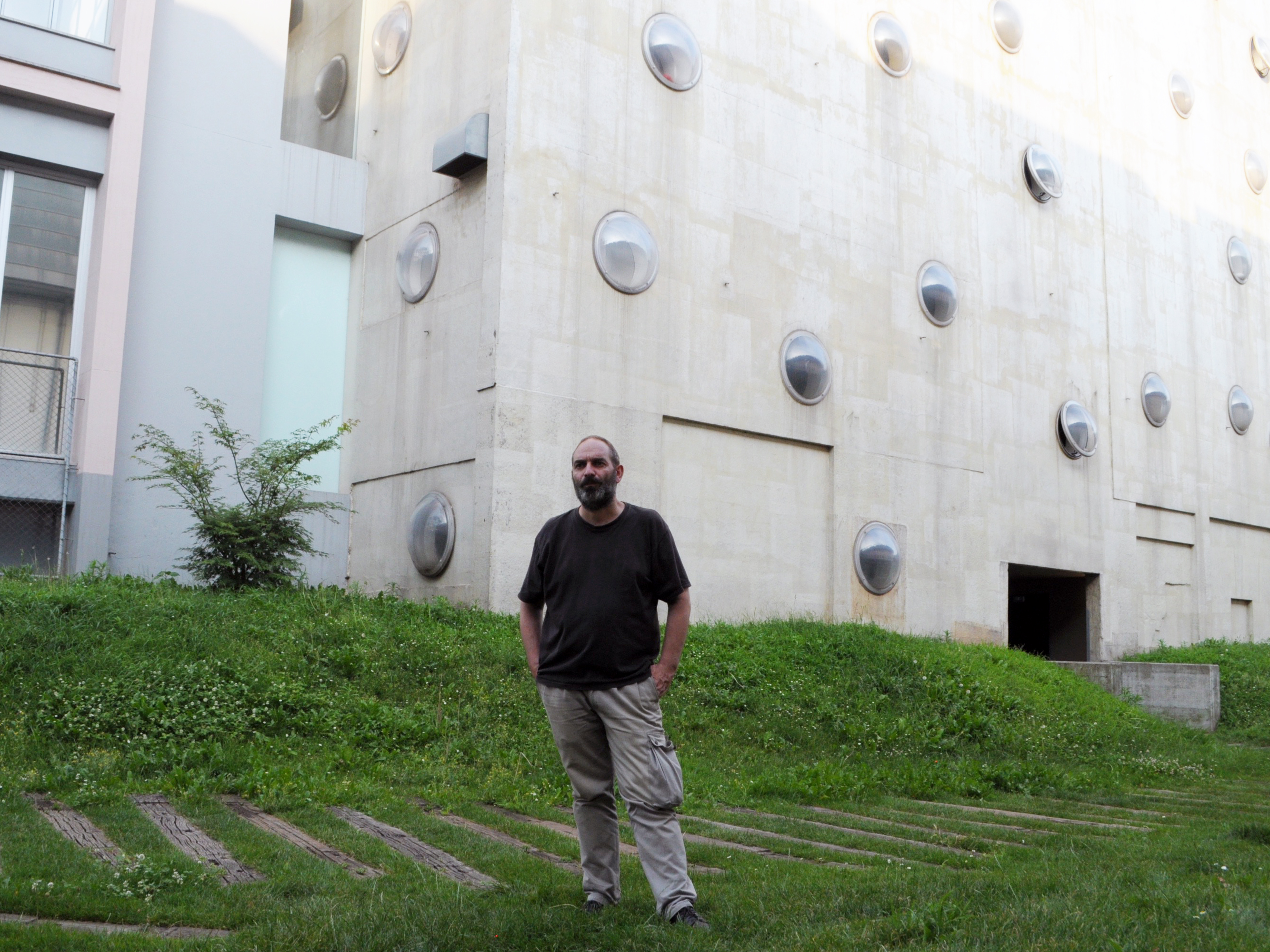

AM:
Can you explain the concept of relational design and how do you think it can improve the city?
SM:
The foremost quality a designer should have is to be social. That is to be able to deal with other people. . I work a lot in education. There are a number of skills that we can assess. We can make a test, to check if the students know how to draw. It takes one minute to draw a tree or a portrait and it becomes immediately obvious who is able to and who is not. Even the students themselves acknowledge this fact. However, there are some skills that we cannot assess. For example, if a student doesn’t know how to talk to the teacher, this is invisible to them, and we cannot teach them in a straight way. This is why with relational design we set up a Masters course where we try to generate the conditions where social skills become very important. In design education, there are individual tasks such as the design of a cup, but we could also make a course where students have to build a house on top of a tree. In this case, no one can do this by themselves and students must collaborate. Both courses can be very good, but the second one works better in terms of social skills.AM: What do you think is the value of bringing this into education?
AM:
What do you think is the value of bringing this into education?
SM:
There used to be a saying that you go to school to learn the tools of your trade. You go to class to fill your toolbox. You finish school and you have your toolbox to go around the world with. However, the world has become very complex and a toolbox is not enough anymore. You need five trucks to have all the skills you need! So why don’t we shift from the toolbox to the address book? To professionally succeed, what is important is not to master all the different skills, but to know all the people that can help you. The relational design Masters course is organized in a way that students don’t have to learn all these different skills but they do learn how to start a dialogue with all the different actors, clients, stakeholders, suppliers, videomakers and curators. Every year I say: ‘In this class there are 100 students. The good student is the one that gets good grades. The excellent student is the one that understands that the game is to understand who of the other students are the good ones to collaborate with.’ The school is just an excuse to find collaborators. Some people understand that and others don’t.
